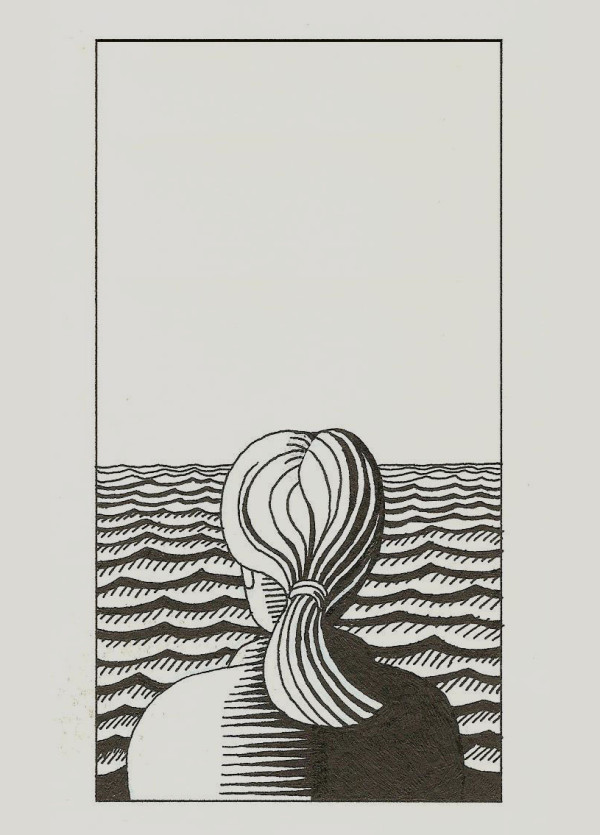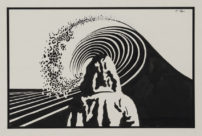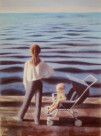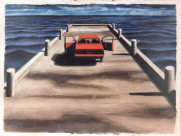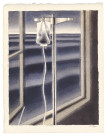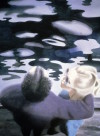This figure in a landscape is drawn with cartoon-like simplicity. The waves of the woman’s hair echo the repeating patterns of the sea. Strong shadows anchor the figure to the bottom of the frame. The figure looks small and ordinary, her face hidden from the viewer. And yet there is a sense of expectation and mystery here. In part because Robert contrasts the abundance of lines in the lower third of the image with the blank space above. As in Japanese art, the emptiness, the void, is as important as what is depicted.
Romantic artists show figures in nature before awe-inspiring scenes that trigger an expansion of awareness and sense of heroic individualism. Belgian surrealist artist René Magritte used two strategies to counter Romanticism: 1) his scenes of nature were generic, showing patterns of clouds and waves that were monotonous and predictable; and 2) he repeatedly used the non-descript character of a bowler hatted man, seen from behind, who exhibits a “conspicuous lack of identity.” (Sarah Whitfield, Magritte, 1992) Robert’s drawing shares some of these same Magrittean qualities that frustrate identification. The result is somewhat enigmatic, provoking a mixed psychological response. Robert pursued this notion further in paintings such as Accident, Wharf and Lifeline.
